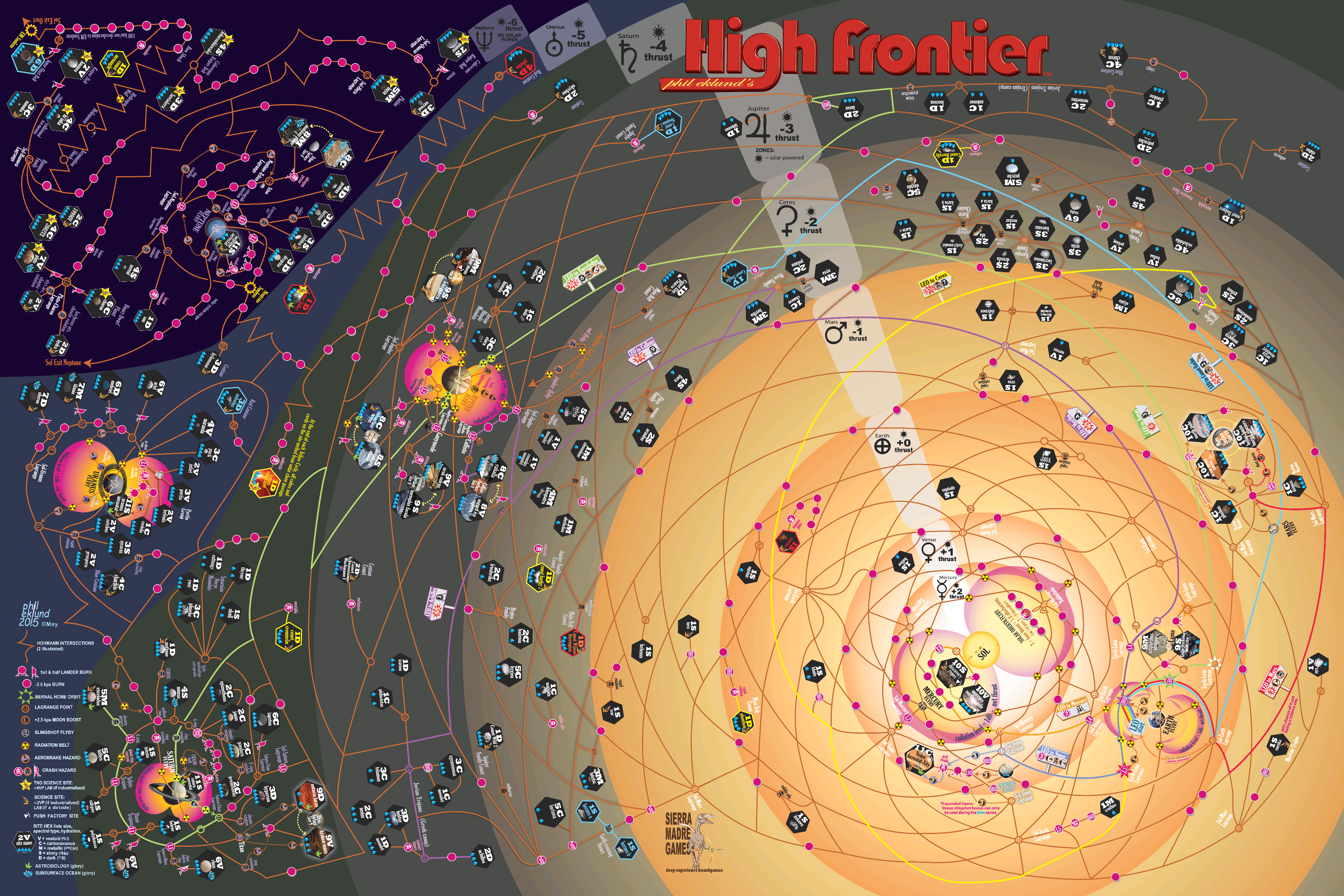High Frontier is a bit hard to describe succinctly, but I'll try. High Frontier is like… it's like Aurora, but IN SPACE!
Ok, that's not quite it. It's like playing a game of Aurora with 4 NPRs all starting on Earth, but as a board game. Except that the NPRs are controlled by real people. High Frontier only covers the Sol system (well, you can build an interstellar-capable ship and leave the system, if you really want the extra points), and you control a space program like NASA or ESA instead of a whole country. You build your ships from real near-future technologies such as solar sails, ion drives, nuclear thermal rockets, orion drives, etc. This is not mere fluff; all of these technologies are modelled quite well so that solar sails and orion drives behave very differently, and open up different opportunities.
But I think the best way to show off the game is the absolutely gorgeous board:
 https://boardgamegeek.com/image/2585121/high-frontier-third-edition
https://boardgamegeek.com/image/2585121/high-frontier-third-edition; you should definitely view this full-screen.
Because the board is a rectangle, it obviously cannot accurately represent distances or directions. Instead, the author has chosen to represent the energy and time necessary to visit other worlds in our solar system. This is the real deal; the rocket equation is an integral part of the game. The heavier your rocket is, the more fuel it must use for every move. The curved lines on this map are the paths you can choose to follow, counting off time and fuel expended as you go. Notice how the paths in the outer system zigzag. Each zig and zag is another year spent on the trip, or extra fuel used to shorten the trip.
What do you do when you get to your destination? You construct factories that can build even better technologies for your rockets than can be produced on earth. This is where you build a mag sail that can go from Earth to the moons of Jupiter in one year, or a
nuclear lightbulb rocket that uses a closed-cycle gas-core nuclear reactor to heat your propellant to 22,000°C.
There are two major variants that get played, called the "basic" game and the "advanced" game. In the basic game the win condition is to build the most factories. In the advanced game, the win condition is to gain victory points by enacting certain Futures, which greatly change how human society works. You could crash a comet into Earth, build an antimatter factory, form a hive mind, emancipate the AIs, build an interstellar starship, as well as half a dozen other possibilities. I said that the game only takes place in Sol, but if you want to go all-in you can actually leave the Sol system once you've built and crewed a viable interstellar ship. You can then pull the
second board out of the box and start playing the interstellar game while everyone else is still stuck in Sol. Interstellar trips are much, much harder than mere interplanetary ones, but if you manage to find and colonize another planet it is worth a lot of victory points. To be competitive in the advanced game you must build an industrial base that would win you the basic game, so this game has it's own built-in tutorial. It also has several solitaire modes.
I think this is the finest board game I've ever played. Possibly it is the finest ever made. If you haven't played it yet, you've been missing out.